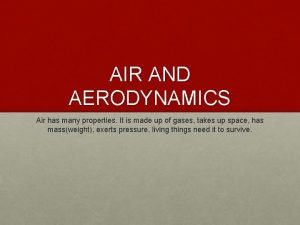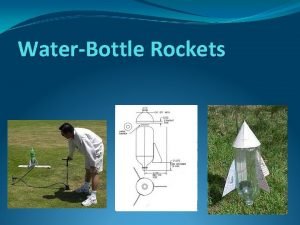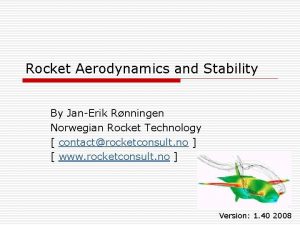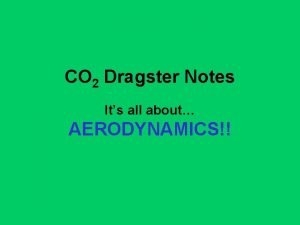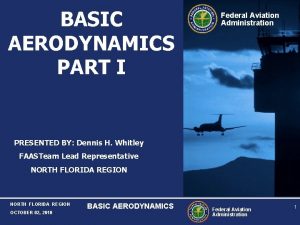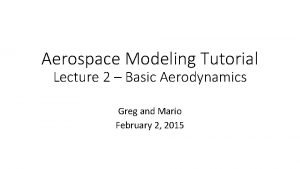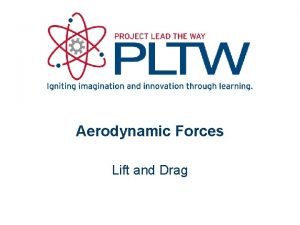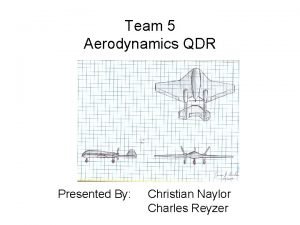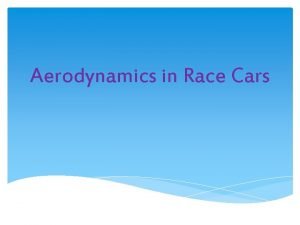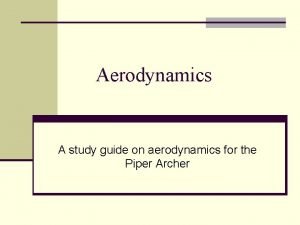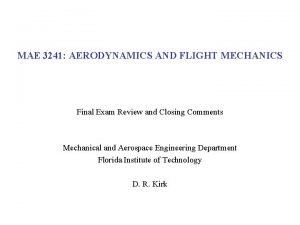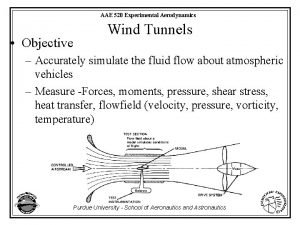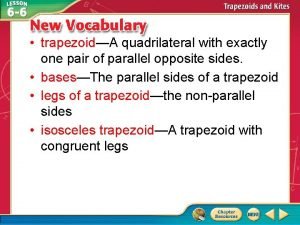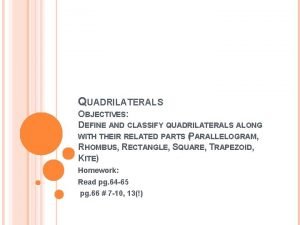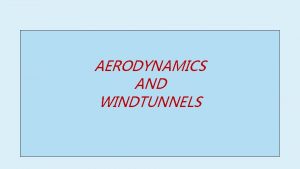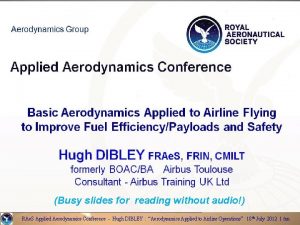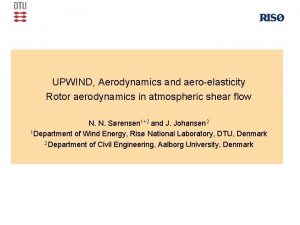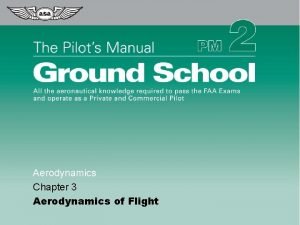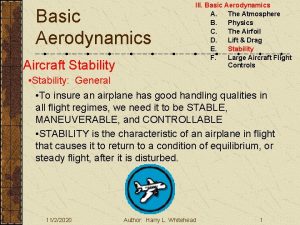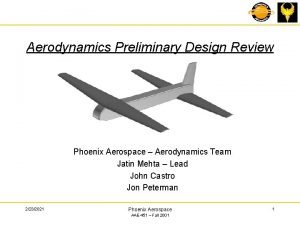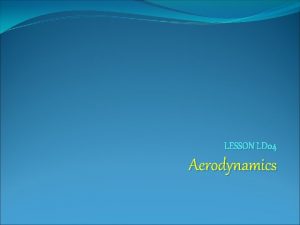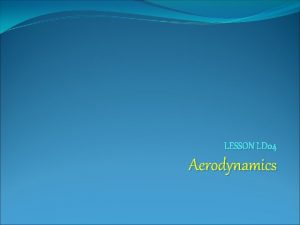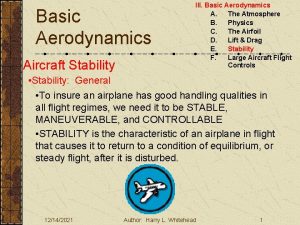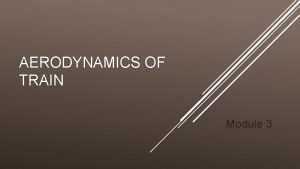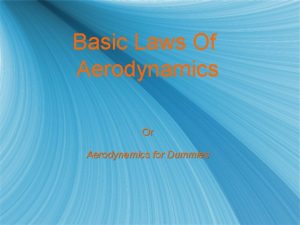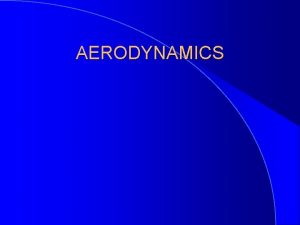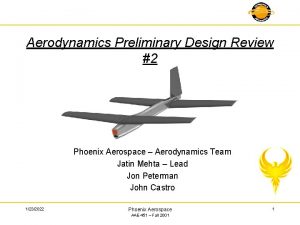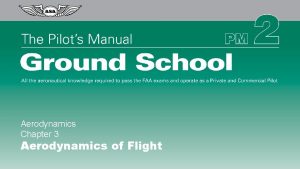AIR AND AERODYNAMICS AIR WHAT IS IT EXACTLY


















- Slides: 18

AIR AND AERODYNAMICS

AIR! WHAT IS IT EXACTLY? ? • an invisible mixture of several gases. (Oxygen [1/5], Nitrogen[4/5], Carbon Dioxide, Helium, Methane, etc. ) WHAT ARE SOME CLUES THAT PROVE OXYGEN IS AROUND US? in the atmosphere: animals, humans included, use it in the respiratory OXYGE N process, it’s the element that combines with iron atoms to form rust and it’s the essential ingredient that sustains combustion. . If air were composed primarily of oxygen, even the smallest spark could set off a planet-wide firestorm!

PROPERTY #1: AIR TAKES UP SPACE AND CAN BE COMPRESSED

PROPERTY #2: AIR HAS MASS

PROPERTY #3: AIR CAN FLOW

PROPERTY #4: AIR IS EFFECTED BY TEMPERATURE

BERNOULLI’S PRINCIPLE • Wings are streamlined forms known as airfoils that make use of a phenomenon called Bernoulli’s principle to maximize upward lift. • According to Bernoulli’s principle, as the velocity of a fluid increases, the pressure it exerts decreases. (Remember, air in motion behaves like a fluid. ) • Because air moves over the curved upper surface of a wing faster than it moves along the underside of a wing, there is less air pressure above the wing, more below and lift is created

FIRST OFF… • In order to fly, the downward force of gravity must be overcome. Period. • This holds equally true for balloons, birds, bullets, bats, insects, kites, planes and spacecraft. • Hot-air and helium balloons depend on the fact that they are lighter than the air they displace so they float upward, much like a cork floats to the surface when immersed in water. • Spacecraft use the immense power of rockets to thrust them skyward against the pull of gravity.

AIR RESISTANCE AFFECTS A MOVING OBJECT IN TWO WAYS: 1. it generates drag acting 2. it also lifts the object in the direction opposite perpendicular to the direction of motion. This effect is experienced when you launch a kite. As you run with the face of the kite vertical behind you, you can feel the drag exerted on the kite and watch as it soars upward due to lift.

THE AERODYNAMIC FORCES (FOR EXAMPLE, THE AMOUNT OF DRAG AND LIFT) CREATED IN A STREAM OF AIR DEPEND ON: Form/Desig n Air Density forces vary in direct proportion to air density Airspeed forces increase as the square of the airspeed The shape, angle and area of the surface meeting the air. The goal is to come up with a form that minimizes the drag attributable to these factors (for example, to streamline the form) while maximizing lift.

BERNOULLI’S PRINCIPLE • The same principle is behind the design of golf balls: the tiny dimples act as individual airfoils that accelerate air flow over the ball’s surface and create lift. • You can also apply Bernoulli’s principle to generate a downward force by making the airfoil’s lower surface curved (longer) and upper surface flat (shorter). Race cars use this reverse airfoil design to gain increased traction on the road.

AIRPLANES • In general, for an airplane or an animal to sustain straight, forward flight at a constant speed and altitude, forward thrust provided by the propulsion must be greater than the backward drag (see Figure). • To achieve flight, the upward lift must be greater than the downward force of gravity, and additional thrust is needed. If thrust balances drag, and lift balances the downward force of gravity, the plane or animal will hover.

PROPULSION • A device that provides a forward thrust. For example: an airplane engine • The wings of birds, bats and insects serve a similar dual function. They act as both the means of propulsion and as airfoils. Insect wings are often flat when at rest but take on the curved shape of an airfoil once they begin to beat against the air. Likewise, a bird’s entire wing changes shape in the course of a wing stroke in order to maximize the lift and forward motion attained from the down stroke and minimize the drag encountered in the upstroke.

BIRDS – THEY ALSO USE 3 OTHER MOTIONS They are flapping, twisting and folding. • Twisting allows each part of the wing to keep the necessary angle relative to the airflow. The wings are flexible, so they twist automatically. • Wing flapping is not essential, but upstroke actually slows the bird down! • By folding its wings a bird can reduce drag during the upstroke.

OXIDIZATION • Chemical reaction that an object has with oxygen

STREAMLINE • Means to reduce drag

IMPORTANT WORDS • Bernoulli’s Principle • Observation • Aerofoil • Hypothesis • Streamlined • Manipulated Variable • Adaptations • Constant (Controlled) Variable • Propulsion • Responding Variable • Ascend • Descend • Oxidization • Aerodynamic

http: //www. youtube. com/watch? v=pd 5 B MP_41 b. I
 Air and aerodynamics
Air and aerodynamics China aerodynamics research and development center
China aerodynamics research and development center Aerodynamics of a water bottle rocket
Aerodynamics of a water bottle rocket Rocket aerodynamics
Rocket aerodynamics Co2 dragster aerodynamics
Co2 dragster aerodynamics Faa aerodynamics
Faa aerodynamics Aerodynamics
Aerodynamics Define aerodynamics
Define aerodynamics Equation for aerodynamic drag
Equation for aerodynamic drag Reyzer 5
Reyzer 5 Aerodynamics of race cars
Aerodynamics of race cars Stall speed and load factor
Stall speed and load factor Aerodynamics system identification key
Aerodynamics system identification key Induced drag formula
Induced drag formula Aae 520
Aae 520 Air higroskopis air kapiler dan air gravitasi
Air higroskopis air kapiler dan air gravitasi A trapezoid is quadrilateral with exactly one pair
A trapezoid is quadrilateral with exactly one pair Quadrilateral with exactly one pair of parallel sides
Quadrilateral with exactly one pair of parallel sides How many planes of symmetry are there in a cuboid
How many planes of symmetry are there in a cuboid
